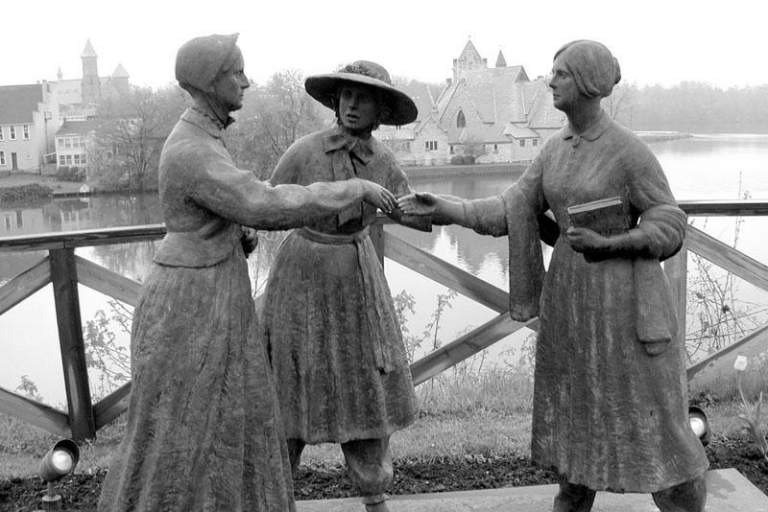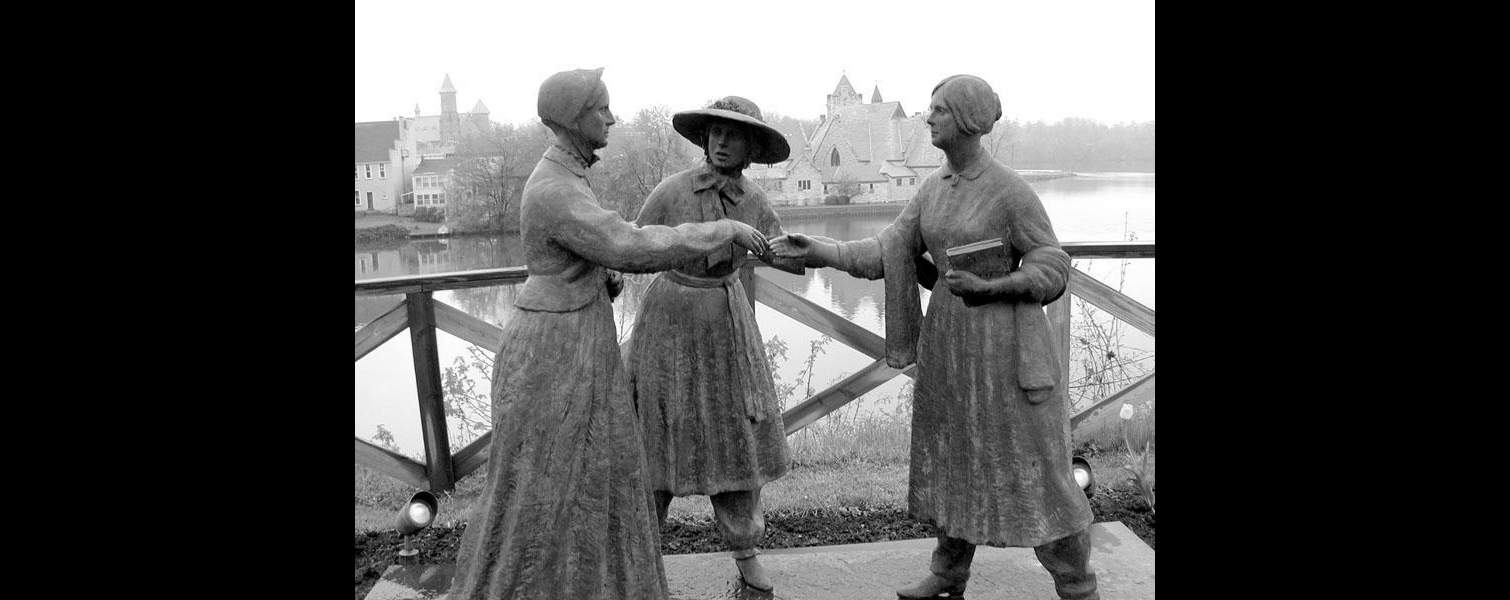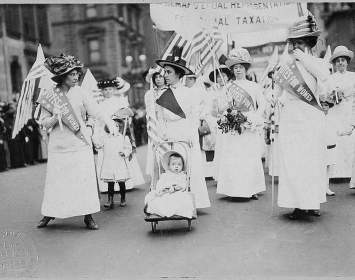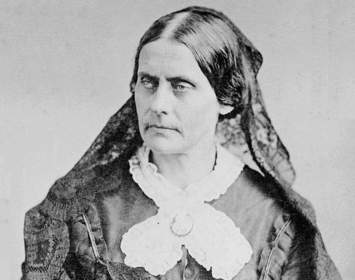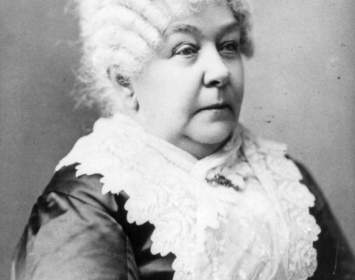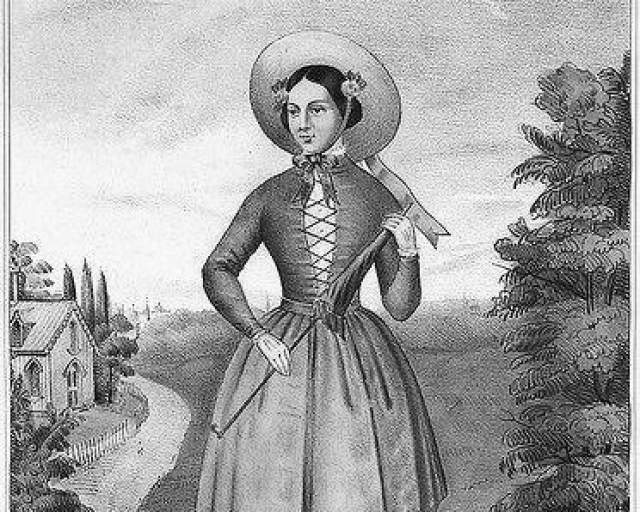This 1998 statue by area sculptor Ted Aub depicts the first meeting of feminist activists Susan B. Anthony and Elizabeth Cady Stanton. On May 12, 1851, after attending an antislavery lecture by William Lloyd Garrison, Anthony and Stanton were introduced on the streets of Seneca Falls, New York, by dress reform advocate Amelia Jenks Bloomer, thus forming part of the team that would later lead various woman’s rights organizations. (Nineteenth-century practice was to use the singular, woman's, when referring to women as a class; later practice was to use the plural, women's.)
The sculpture is located on the shore of Van Cleef Lake along Bayard Street, the route a visitor would take when traveling between two principal Seneca Falls historical attractions, the Women’s Rights National Historical Park and the Elizabeth Cady Stanton House.
Bloomer lent her name to a mode of dress embraced by many nineteenth-century reformers. The garment, comprising a roughly knee-length skirt over pantaloons, was developed by Peterboro, New York, resident Elizabeth Smith Miller. The garments became known as "Bloomers" after Amelia Bloomer promoted the style in her periodical The Lily, the first U.S. newspaper edited by a woman.
The meeting this sculpture depicts took place weeks after Miller, Stanton, and Bloomer surprised the citizens of Seneca Falls by stepping out on the town, each wearing Bloomers; this may have been the style’s first major public appearance and earned press attention across the country.
This sculpture shows Stanton, too, wearing the so-called "reform dress," although her skirt is longer than that worn by Bloomer. At that time, middle-class women made most of their own clothes, often without benefit of patterns, so some variation in interpretation of any new style was to be expected.
Working together and with Matilda Joslyn Gage, Anthony and Stanton were principal leaders of the woman suffrage movement during the middle and later nineteenth century. The meeting this sculpture depicts was an essential waypoint on the path to the passage of the Nineteenth Amendment, which established the right of American women to vote in 1920.
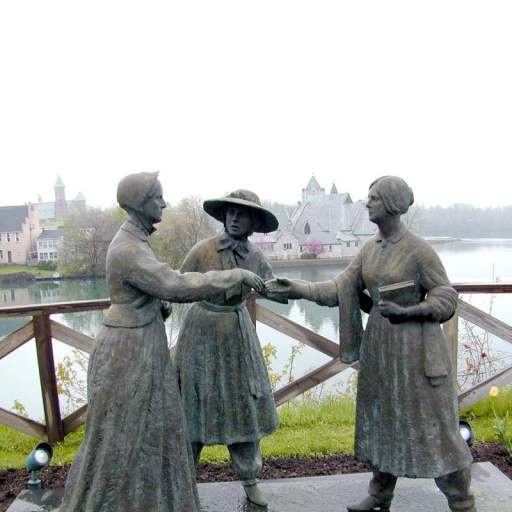
Anthony-Stanton-Bloomer Statue
The Anthony-Stanton-Bloomer statue stands on parkland overlooking Van Cleef Lake in downtown Seneca Falls. Left to right: Susan B. Anthony, Amelia Bloomer, and Elizabeth Cady Stanton.
Note Bloomer's relatively short skirt over pantaloons. (Stanton wears the "reform dress" also but with a longer skirt.) Bloomer was the best-known advocate of this short-lived reform of women's fashion. The style came to be called the "Bloomer costume," named after her.
